A) has never been proven to be successful.
B) create lightning that will initiate the collision and coalescence process.
C) relies on warming the cloud so that water vapor will condense on ice crystals more easily.
D) relies on cooling the cloud so low that water vapor will condense on ice crystals more easily.
F) A) and C)
Correct Answer

verified
Correct Answer
verified
Multiple Choice
The recurrence of drought as conveyed through the return period is expressed as
A) (number of years of record) / (rank for a specific precipitation event) .
B) (rank for a specific precipitation event) / (number of years of record) .
C) (magnitude of a specific rainfall event) / (duration of the rain event) .
D) (duration of the rain event) / (magnitude of a specific rainfall event) .
F) None of the above
Correct Answer

verified
Correct Answer
verified
Multiple Choice
Fog in the U.S.is least likely to occur in the __________ when vapor pressure is higher and temperatures are __________
A) winter; lower
B) winter; higher
C) summer; higher
D) summer; lower
F) C) and D)
Correct Answer

verified
Correct Answer
verified
Multiple Choice
The 500 mb pressure patterns displayed would bring _________________________ to Texas and the High Plains. 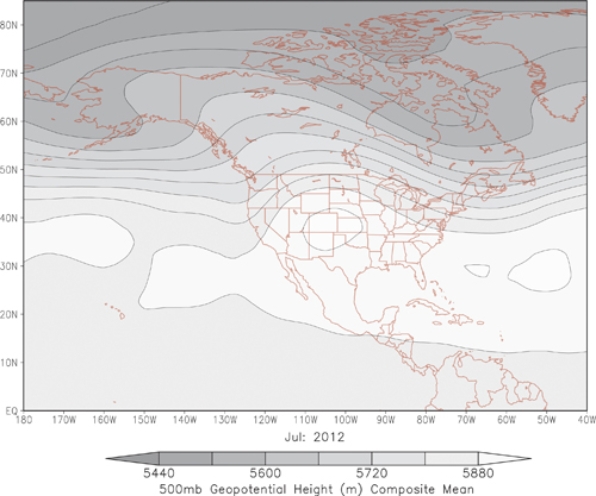
A) zonal flow which neither suppresses nor supports storms
B) a trough of low pressure, supporting storm formation
C) zonal flow, supporting storm formation
D) a ridge of high pressure, suppressing storm formation
F) C) and D)
Correct Answer

verified
Correct Answer
verified
Multiple Choice
The formation of freezing rain involves:
A) snow passing through a fairly thick layer of above freezing air before passing through a thin layer of subfreezing temperatures near the surface.
B) air temperatures decreasing uniformly with height, producing the cold conditions necessary for freezing rain formation.
C) air temperatures increasing uniformly with height, producing the cold conditions necessary for freezing rain formation.
D) snow passing through a fairly thin layer of above freezing air before passing through a thick layer of subfreezing temperatures near the surface.
F) B) and C)
Correct Answer

verified
Correct Answer
verified
Multiple Choice
Observe these two maps of specific humidity, the top from July 2012, the bottom from May 2012.Which condition could account for the observed changes? 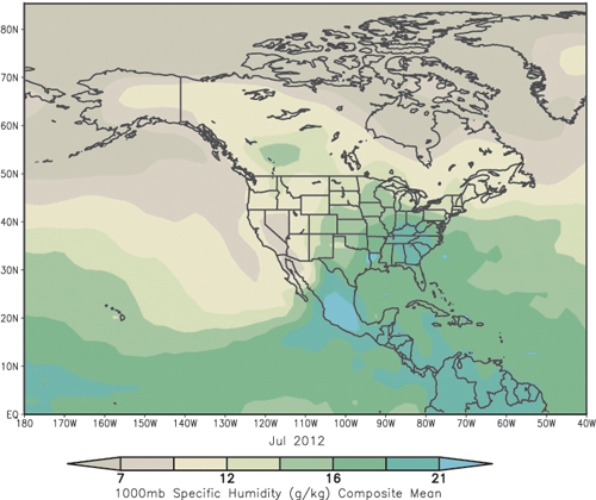
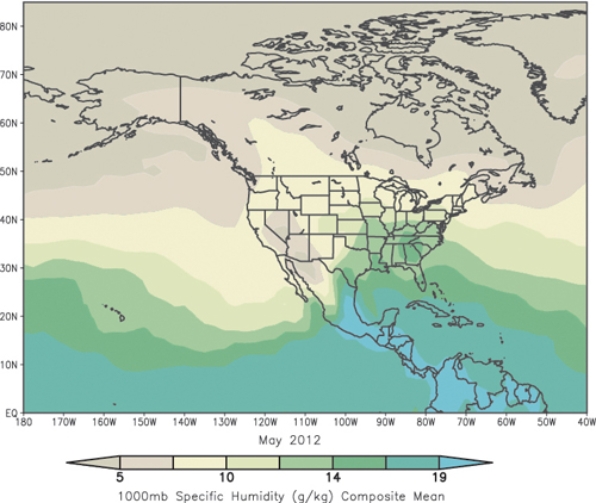
A) July strengthening of the Bermuda-Azores high advecting moisture to the High Plains from the Gulf of Mexico
B) May strengthening of the Bermuda-Azores high advecting moisture to the High Plains from the Gulf of Mexico
C) July strengthening of the Hawaiian high advecting moisture in a zonal pattern to the High Plains from the Pacific
D) May strengthening of the Hawaiian high advecting moisture in a zonal pattern to the High Plains from the Pacific
F) A) and C)
Correct Answer

verified
Correct Answer
verified
Multiple Choice
These low level clouds are composed of water droplets and indicate slightly unstable conditions 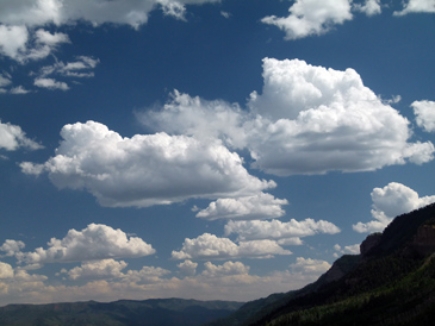
A) cumulonimbus.
B) cirrocumulus.
C) cumulus.
D) altocumulus.
F) A) and B)
Correct Answer

verified
Correct Answer
verified
Multiple Choice
The urban heat island steepens the environmental lapse rate, creating unstable conditions by
A) greatly heating the ground surface with less heating further up in the atmosphere.
B) greatly heating the ground surface and greatly heating the atmosphere further up.
C) greatly cooling the ground surface with great heating further up in the atmosphere.
D) greatly cooling the ground surface and greatly cooling the atmosphere further up.
F) A) and B)
Correct Answer

verified
Correct Answer
verified
Multiple Choice
Which of the following regarding ocean currents and atmospheric stability is true?
A) Cold currents promote unstable atmospheric conditions and enhanced water vapor capacity
B) Cold currents promote stable atmospheric conditions and limited water vapor capacity
C) Warm currents promote stable atmospheric conditions and limited water vapor capacity
D) Warm currents promote unstable atmospheric conditions and limited water vapor capacity
F) B) and C)
Correct Answer

verified
Correct Answer
verified
Multiple Choice
A parcel of air at 5 km.and an initial temperature of 10C altitude descends to 3 km altitude at the unsaturated adiabatic lapse rate.What is the temperature at 3 km?
A) -30C
B) 0C
C) 30C
D) 60C
F) B) and C)
Correct Answer

verified
Correct Answer
verified
Multiple Choice
Which of the following environmental lapse rates represent stable inversion conditions? 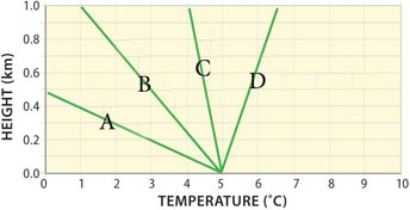
A) A
B) B
C) C
D) D
F) A) and B)
Correct Answer

verified
Correct Answer
verified
Multiple Choice
Which of the following conditions is best suited to create an advection fog?
A) vertically descending dry, cold air moving over a warm surface
B) vertically rising moist, warm air moving over a cold surface
C) laterally moving dry, cold air moving over a warm surface
D) laterally moving moist, warm air moving over a cold surface
F) All of the above
Correct Answer

verified
Correct Answer
verified
Multiple Choice
A parcel of saturated air at 20C would have approximately _____ times _____ water vapor than saturated air at 0C. 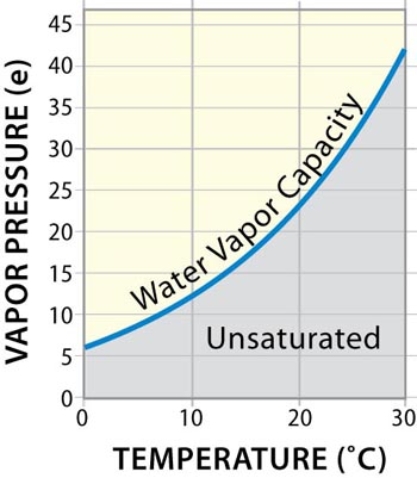
A) 5; more
B) 20; more
C) 5; less
D) 20; less
F) A) and B)
Correct Answer

verified
Correct Answer
verified
Multiple Choice
Which of the following locations would have the highest specific humidity? 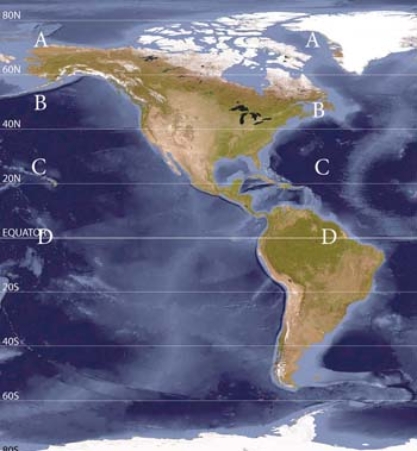
A) A
B) B
C) C
D) D
F) B) and C)
Correct Answer

verified
Correct Answer
verified
Multiple Choice
The warm air being lifted in this map is mostly located in the __________ portion of the map. 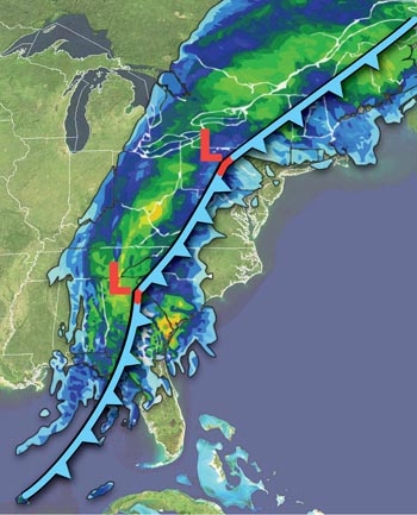
A) northern
B) southern
C) eastern
D) western
F) A) and B)
Correct Answer

verified
Correct Answer
verified
Multiple Choice
Which of the following locations would have low July dew-points, primarily because of the rain shadow effect? 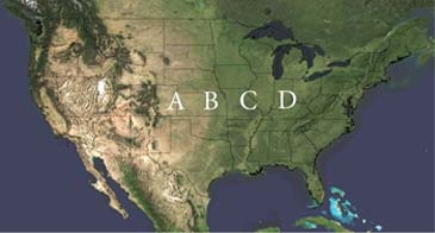
A) A
B) B
C) C
D) D
F) All of the above
Correct Answer

verified
Correct Answer
verified
Multiple Choice
The annual pattern of global precipitation?
A) decreases poleward, inland, and downwind from major mountain ranges.
B) increases poleward, inland, and downwind from major mountain ranges.
C) decreases poleward, inland, and upwind of major mountain ranges.
D) increases poleward, inland, and upwind of major mountain ranges.
F) A) and B)
Correct Answer

verified
Correct Answer
verified
Multiple Choice
In the diagram to the right there is 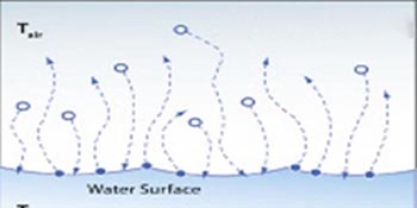
A) higher overall energy levels, with a decrease of water vapor in the air
B) lower overall energy levels, with an increase of water vapor in the air.
C) an equilibrium between condensation and evaporation.
D) lower overall energy levels, with a decrease of water vapor in the air.
F) A) and B)
Correct Answer

verified
Correct Answer
verified
Multiple Choice
Convergence resulting in rising atmospheric motion at the surface can occur in all of the following settings EXCEPT
A) where upper air flow speeds up and there is upper air divergence.
B) air encountering topographic barriers like mountains.
C) collision of two wind systems like along the equator.
D) air moving from a large body of land to a large body of water.
F) A) and D)
Correct Answer

verified
Correct Answer
verified
Multiple Choice
Which of the following locations has the highest July specific humidity values as a result of the monsoon? 
A) A
B) B
C) C
D) D
F) A) and C)
Correct Answer

verified
Correct Answer
verified
Showing 41 - 60 of 75
Related Exams